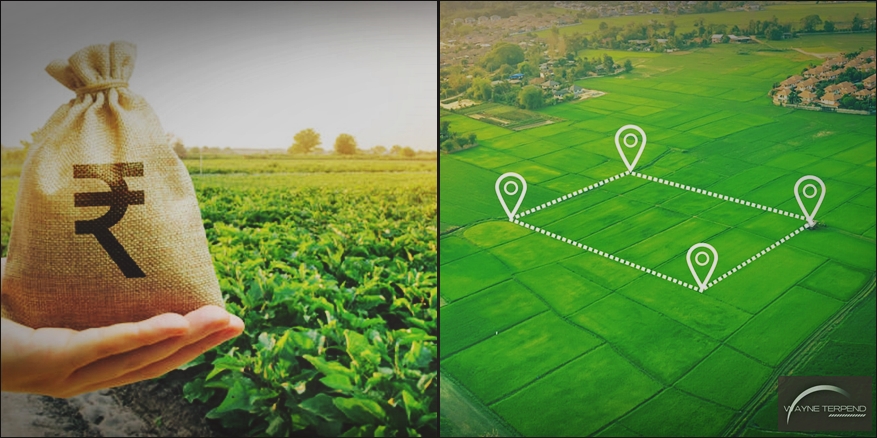

Have you considered investing in land? Land banking is a strategic investment for long-term gains that offers a wide range of opportunities in real estate investment. By investing in undeveloped land, you can potentially generate future profits when the value of the land increases or when it is developed for commercial or residential use.
Unlike other forms of real estate investment, land banking requires minimal maintenance while offering a degree of stability and ease of access. It’s an excellent way to diversify your investment portfolio and avoid market volatilities.
Key Takeaways:
- Land banking is a smart strategy for long-term profit.
- Investing in undeveloped land offers plenty of opportunities in real estate.
- Land banking is a low-maintenance investment option.
- Land banking helps diversify your investment portfolio and minimize market volatilities.
- With land development opportunities, you can enhance the profitability of your investment.
Understanding Land Banking
Land banking is a long-term investment strategy that involves acquiring land with the intention of holding onto it until the value appreciates significantly. It is a popular way to diversify a portfolio, especially for those who want to invest in real estate without the costs and potential risk associated with building on it.

Land Banking Strategy
The land banking strategy involves identifying land parcels that are expected to increase in value over time. Investors will typically consider factors such as location, zoning restrictions, and planned infrastructure projects to evaluate the potential growth prospects of the land. The goal is to purchase land at a low price and hold it until it can be sold for a significant profit.
Land Banking Opportunities
There are various land banking opportunities available to investors. Some may choose to invest in land located in prime locations, such as areas that are expected to undergo rapid development or have a high demand for real estate. Others may choose to specialize in land parcels that have unique features or are suitable for specific types of development, such as commercial or residential properties.
Land Banking Process
The land banking process involves several key steps. First, investors will need to identify suitable land parcels and conduct thorough due diligence to assess their value and potential risks. They will then need to secure financing to purchase the land and create a comprehensive land banking strategy that outlines their investment objectives and expected returns. Once the land has been acquired, investors will typically hold onto it for several years before selling it for a profit.
Benefits of Land Banking
Land banking is a strategy that can offer a range of benefits for investors looking to grow their portfolios over time. Here are some of the key advantages of land banking:
- Steady source of income: Investing in land can provide a stable source of passive income through leasing or renting the property to interested parties.
- Hedge against inflation: Real estate in general, and land in particular, can act as a hedge against inflation, as both land prices and rental incomes tend to increase with inflation.
- Potential tax benefits: Land banking can also offer potential tax benefits, including depreciation deductions, property tax deductions, and 1031 exchanges.
- Ties into a larger strategy: Land banking can be an integral part of a larger investment strategy, providing diversification and a unique long-term holding option that can complement shorter-term investments.
Overall, land banking can be a smart way to build wealth over time while mitigating risks associated with more volatile investment options.
Evaluating Land Investment Opportunities
Investing in land is a smart long-term strategy that can offer substantial returns. However, selecting the right land investment opportunity is crucial for profitability. Here are some factors to consider while evaluating land investment opportunities:
Location
The location of the land is a significant consideration when evaluating investment opportunities. Factors such as proximity to infrastructure, major cities or tourist destinations, and potential for future development can significantly impact the value of the land.
Zoning Regulations
Zoning regulations can significantly impact the use and development potential of the land. Familiarize yourself with local zoning laws and restrictions, and ensure they align with your investment objectives before investing.
Infrastructure Development
Investing in land that has nearby transportation options and access to utilities like water, gas, and electricity can increase the value of the land. Consider the proximity to public transport or major highways before making your investment decision.
Potential Returns on Investment
Understanding the potential returns on investment is crucial when evaluating land investment opportunities. Factors such as market trends, future development potential, and taxes can impact ROI. Research comparable properties in the area and evaluate their ROI before investing.
By evaluating land investment opportunities based on these factors, investors can gain valuable insight into the potential return on their investments and make informed decisions about their land banking opportunities.
Due Diligence in Land Banking
Before investing in land banking, it’s crucial to conduct thorough due diligence to ensure a successful outcome. The following tips can help guide your research:
- Conduct research: Gather information about the property, including location, market trends, and nearby development projects.
- Assess risks: Identify potential challenges that could impact the property’s value, such as environmental concerns, zoning regulations, or land entitlement issues.
- Understand legal considerations: Familiarize yourself with the local laws and regulations related to land ownership and land development.
- Partner with experts: Consult with experienced professionals, such as real estate attorneys, developers, and engineers, to gain additional insights and expertise.
By conducting proper due diligence, you can mitigate potential risks and ensure that your land bank investing strategy is sound and beneficial.
“Conducting thorough research is key to identifying opportunities and mitigating risks in land banking” – John Smith, Real Estate Developer
Steps to Start Land Banking
Land banking can be a rewarding investment strategy over the long-term if done correctly. Here are some key steps to help you start:
- Identify suitable land parcels: Research potential land parcels that can be acquired for future development. Consider location, zoning regulations, and surrounding infrastructure.
- Secure financing: Explore your financing options for land banking. Traditional loans from banks, private investors, and crowdfunding platforms are all potential options.
- Create a comprehensive land banking strategy: Develop a strategic plan for acquiring and holding land. Consider market trends, tax benefits, and potential for future development.
- Perform due diligence: Conduct thorough research and analysis before investing in any land parcel. Evaluate risks, legal considerations, and potential returns on investment.
By following these steps, you can start your land banking journey and take advantage of the numerous opportunities in this exciting investment field.
Maximizing Returns through Land Development
Land banking alone can be a lucrative investment strategy, but savvy real estate investors know that the real profits lie in land development.
One way to maximize returns on land banking investments is through rezoning. This process involves changing the current zoning regulations on a particular piece of land to allow for different types of use or development. For example, land that is currently zoned for agricultural use can be rezoned into residential, commercial, or industrial use. This can significantly increase the value of the land and open up a wider range of development possibilities.
Another strategy is to subdivide the land into smaller parcels and sell them individually. This is a popular choice for land that is in high demand but not large enough for a significant development project. By subdividing, investors can sell each parcel separately, creating more potential buyers and maximizing profits.
Land banking can also be used as a long-term investment for future development. This involves identifying areas that are projected for significant growth in the coming years and purchasing land there ahead of time. This allows investors to take advantage of the expected appreciation of land values once the area experiences growth and development.
| Benefits | Challenges |
|---|---|
|
|
Overall, land development is a valuable strategy for maximizing returns on land banking investments. By taking advantage of rezoning, subdivisions, and long-term growth projections, investors can increase their profits and diversify their real estate portfolio.
Mitigating Risks in Land Banking
As with any investment, land banking comes with potential risks. To ensure success, it’s important to understand and mitigate those risks. Here are some key strategies to consider:
1. Stay vigilant against market fluctuations
The real estate market can be volatile, with prices fluctuating rapidly. To mitigate this risk, consider investing in areas with stable economic growth, low crime rates, and reasonable demand. Keep track of market trends, and stay up-to-date with the latest economic news.
2. Address land entitlement issues
Land entitlement refers to the process of obtaining the requisite permits and approvals for a piece of land to be developed. These issues can delay or even halt a project, which can result in financial losses. Before investing, conduct thorough research to understand entitlements in the area, and consider working with a reputable land development expert who can guide you through the process.
3. Consider environmental factors
Environmental regulations can add significant costs to a land development project, and failure to comply with those regulations can result in hefty fines. To avoid these risks, conduct a thorough environmental assessment of the property prior to investing. Work with professionals who can help you navigate the regulations and guidelines in your area.
By taking a conscientious approach to land banking, investors can minimize risk and maximize returns. With the right strategy in place, land investment can be a smart way to build wealth and secure a profitable future.
Conclusion
Land banking has emerged as a smart and reliable investment strategy for long-term gains. As discussed in this article, investing in land can offer significant benefits, including a steady source of income, a hedge against inflation, and potential tax advantages. Additionally, land banking can be leveraged for maximum returns through land development, making it a viable investment option for those seeking long-term profitability.
By conducting thorough due diligence, evaluating land investment opportunities and understanding the risks associated with land banking, investors can create a comprehensive land banking strategy that maximizes their returns while minimizing potential risks.
We encourage readers to explore the many opportunities presented by land banking, as it offers a viable investment alternative, particularly in the real estate investment sector. With its potential for long-term financial gain and high return on investment, now is the time to consider investing in land and secure your financial future.
FAQ
What is land banking?
Land banking is a strategic investment approach where investors acquire undeveloped land with the goal of holding it for future development or sale. It involves purchasing parcels of land in areas with potential for growth and appreciation.
Why should I consider land banking as an investment?
Land banking offers several advantages. It can provide a long-term investment opportunity with the potential for significant returns. It serves as a tangible asset that can act as a hedge against inflation. Additionally, land banking can offer potential tax benefits and provide a steady source of income.
How does the land banking process work?
The land banking process typically involves identifying suitable land parcels, conducting thorough due diligence, securing financing, and developing a comprehensive land banking strategy. Investors hold the land for a period of time, allowing it to appreciate in value before selling or developing it.
How do I evaluate land investment opportunities?
When assessing land investment opportunities, factors such as location, zoning regulations, infrastructure development, and potential returns on investment should be considered. Conducting thorough research and market analysis is crucial to making informed investment decisions.
What is due diligence in land banking?
Due diligence in land banking involves conducting comprehensive research and analysis to assess the viability and potential risks of an investment. This includes evaluating market trends, analyzing the property’s history, understanding legal considerations, and assessing any potential risks or challenges associated with the land.
How do I start land banking?
To start land banking, you should begin by identifying suitable land parcels that align with your investment goals. Secure financing, create a comprehensive land banking strategy, and conduct thorough due diligence on the selected properties. It is important to work with professionals such as real estate agents, land planners, and investment advisors to ensure a successful start.
How can land banking be leveraged for maximum returns?
Land banking can be leveraged for maximum returns by exploring land development opportunities. This may involve rezoning the land, subdividing it, or exploring other value-added strategies that enhance the profitability of the investment. Working with professionals in the industry can help navigate the development process and create a successful investment strategy.
What are the risks associated with land banking?
Land banking, like any investment, carries risks. Market fluctuations, delays in development, land entitlement issues, and environmental considerations are potential risks. Conducting thorough due diligence, understanding the market dynamics, and developing a risk mitigation strategy can help minimize these risks.

